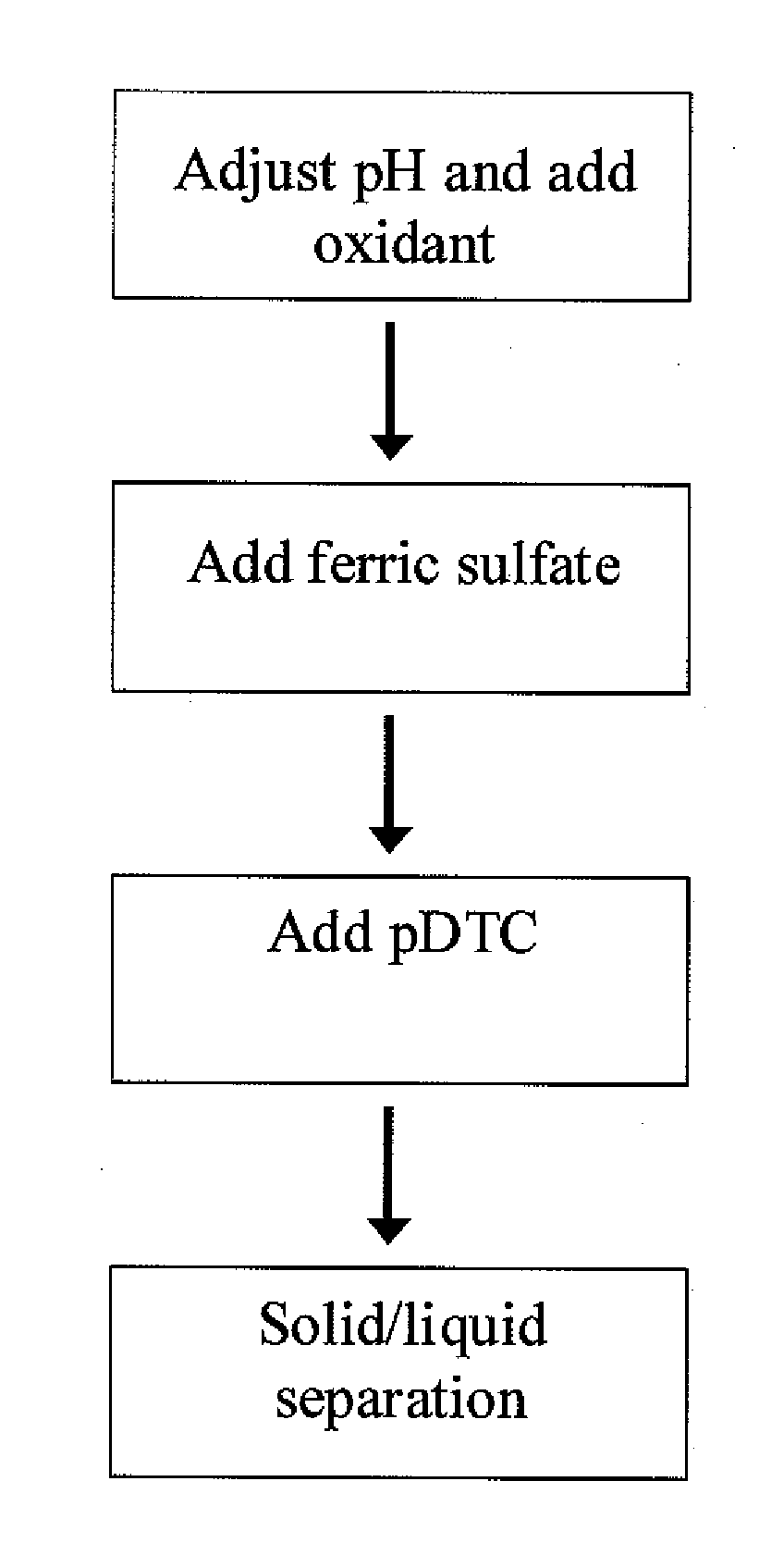Removal of selenium from refinery wastewater
a technology of selenium removal and refinery wastewater, which is applied in the field of matter composition, can solve the problems of limited selenium amount, high toxicity of selenium, and difficult disposal of wastewater produced from activity involving selenium-containing materials, and achieve the effect of reducing the amount of selenium
- Summary
- Abstract
- Description
- Claims
- Application Information
AI Technical Summary
Benefits of technology
Problems solved by technology
Method used
Image
Examples
examples
[0027]The foregoing may be better understood by reference to the following examples, which are presented for purposes of illustration and are not intended to limit the scope of the invention:
[0028]Numerous samples of stripper sour water were obtained from a refinery. These samples contained large amounts of selenium. The samples were then treated according to prior art and the inventive methods of removing selenium. The remaining water then underwent elemental analysis using an Inductively Coupled Plasma technique to determine how much selenium remained in the samples.
TABLE 1Comparative study of selenium removalmethods from sour waste waterFerricTestOxidantSulfatePDTCResidualRun#LiquidpH(ppm)(ppm)(ppm)Se (ppb)Comments1Untreated?0001400—Water2Treated605002001100Not VeryWaterEffective3Treated65000500270—Water4Treated650020050040GoodWaterTreatment5Treated750020020030GoodWaterTreatment
[0029]The data shows that the most effective application of this process occurs in the pH range 6-7 whi...
PUM
| Property | Measurement | Unit |
|---|---|---|
| Fraction | aaaaa | aaaaa |
| Fraction | aaaaa | aaaaa |
| Fraction | aaaaa | aaaaa |
Abstract
Description
Claims
Application Information
 Login to View More
Login to View More - R&D
- Intellectual Property
- Life Sciences
- Materials
- Tech Scout
- Unparalleled Data Quality
- Higher Quality Content
- 60% Fewer Hallucinations
Browse by: Latest US Patents, China's latest patents, Technical Efficacy Thesaurus, Application Domain, Technology Topic, Popular Technical Reports.
© 2025 PatSnap. All rights reserved.Legal|Privacy policy|Modern Slavery Act Transparency Statement|Sitemap|About US| Contact US: help@patsnap.com


